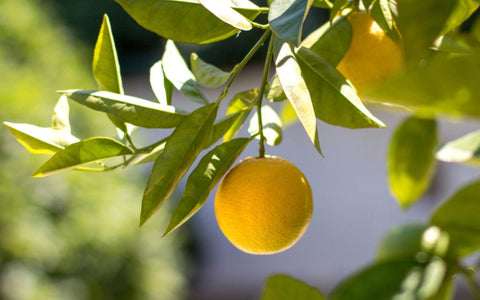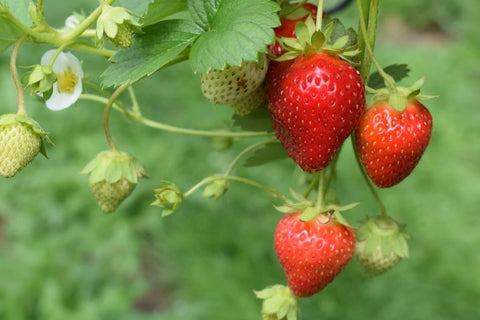How Much Light Do Fruit Trees Need To Grow?
The Total Amount of Light Needed for Fruit
Fruit trees require more sunlight than most other edible plants, making indoor growth challenging. They thrive under full sun exposure, which is difficult to replicate indoors, even with the brightest windows or sunrooms.
Without adequate light, fruit trees may struggle or fail to produce fruit, especially tropical varieties. Using grow lights is essential for successful indoor fruit tree growth. In this article, we will cover:
- Light requirements for different types of fruit trees
- The impact of window direction and seasonality
- How to read your fruit trees' health
- Choosing and setting up the best grow light for your indoor fruit trees
Believe It or Not, the Variety of Fruit Matters in Choosing the Right Grow Light
Different fruit trees require varying amounts of light due to their seasonal fruiting patterns. For example, tropical fruit trees have different day-length requirements to set fruit compared to temperate varieties.
Here’s a breakdown of minimum and ideal hours of sunlight required for common fruit trees:

While most fruit trees prefer full sun, some citrus varieties, such as Thai limes, finger limes, and calamondins, can tolerate lower light levels. For strawberries, alpine varieties tend to thrive indoors.
Do I Have Enough Sunlight to Grow Fruit Trees Indoors?
Considering Window Direction & Seasonality
Fruit trees prefer warmth and are happiest in a south- or west-facing window. If you have unobstructed direct light through these windows, your trees will grow during spring through fall. However, during winter, adding a grow light is recommended for continued growth.
Reading Your Fruit Trees: Are They Happily Lit?
The best way to test if your fruit tree is getting enough light is by observing its growth. If the plant shows little to no growth, or if healthy leaves begin falling off, it’s likely not receiving enough light. You can experiment with lower-light plants, such as lettuce, in the same space for comparison.
Setting Up the Best Grow Light for Indoor Fruit Trees
Grow lights are essential for indoor fruit trees, providing a consistent light source for optimal growth. The right grow light can replicate sunlight and keep your indoor space productive year-round. Here are our top grow light recommendations:
- Best Hanging Option: The 40W Aspect Grow Light is ideal if you can hang lights from the ceiling or wall.
- Best Free-Standing Option: The PlantSpectrum is perfect for a floor-standing light, available in 16W or 32W versions, and is waterproof.
- Best for Flexibility: The Vita Grow Light offers flexibility and can be mounted as a pendant or a free-standing lamp.
All of these grow lights can be paired with a timer to ensure your fruit trees receive the proper light duration each day.
| Best Hanging Option | Best Free-Standing Option | Best for Flexibility |
|---|---|---|
 |
 |
 |
Setting Up Your Grow Light for Indoor Fruit Trees
A powerful spotlight positioned 12 inches from the tree’s canopy is ideal for optimal growth. Ensure that your grow light is set up according to the recommended “total light” hours per day, which varies depending on the fruit tree type (see chart above).

Considerations for Other Grow Lights
Different grow lights suit different plants. High-powered lights like metal halide or high-pressure sodium lights may generate too much heat for herbs. LED grow lights offer a broad range of quality, while fluorescent grow lights work well for growing herbs and greens. For more advanced setups, consider understanding Daily Light Integral and correct light placement.








There are no comments for this article. Be the first one to leave a message!